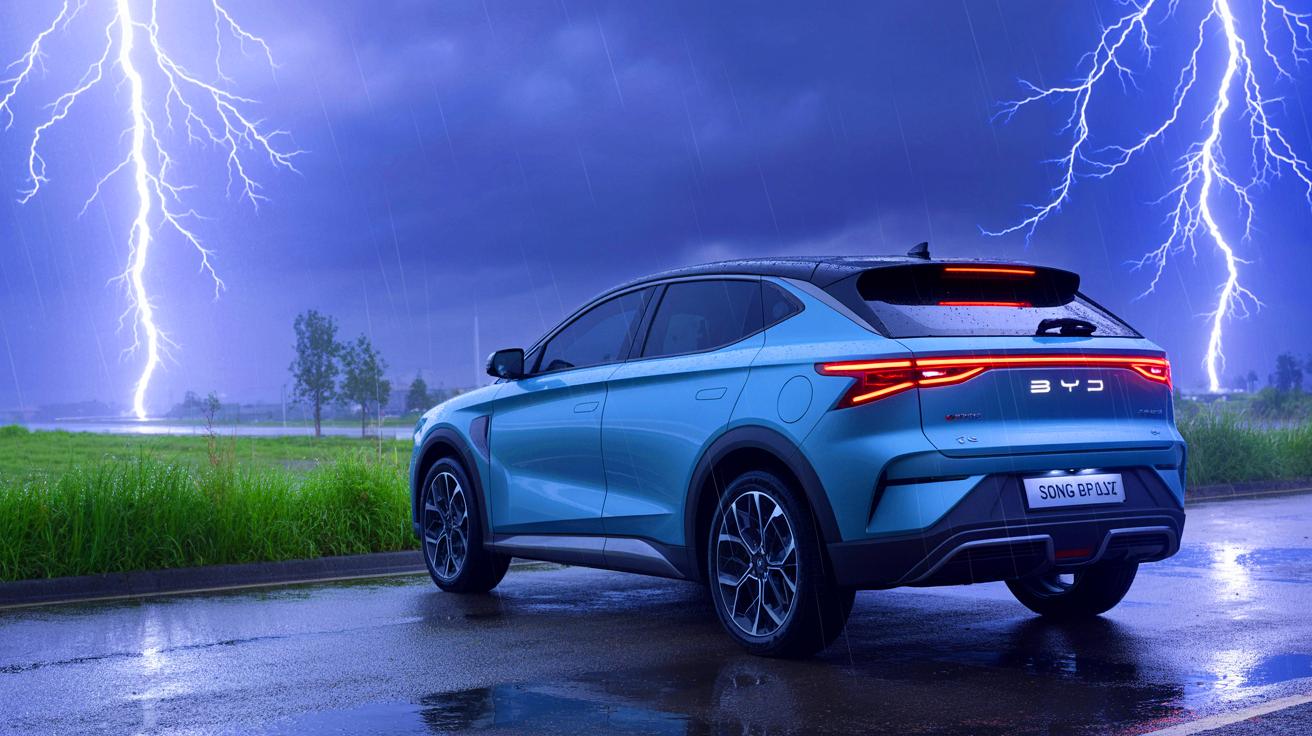
| IN A NUTSHELL |
|
In a remarkable demonstration of modern automotive engineering, a BYD Song Plus electric vehicle recently withstood three successive lightning strikes without causing harm to its driver. This incident, which occurred at the Tieshan service area in Beihai, Guangxi, serves as a compelling case study of the Faraday cage effect. This physical phenomenon allows the metal body of a car to channel electricity safely around the exterior and into the ground, thus protecting its occupants. Despite the drama captured by nearby dashcams, the vehicle’s core components remained unscathed, showcasing the resilience of this popular Chinese export.
Understanding the Faraday Cage Effect
The Faraday cage effect is a scientific principle that plays a crucial role in ensuring the safety of vehicle occupants during a lightning strike. When lightning hits a car, its metal body acts as a conductor, channeling the electric current along the exterior and into the ground. This prevents the current from passing through the cabin, effectively shielding the people inside. Named after the 19th-century scientist Michael Faraday, this principle is a cornerstone of modern automotive safety design.
The recent incident involving the BYD Song Plus highlights the real-world application of this phenomenon. As the vehicle was struck three times in quick succession, the Faraday cage effect ensured the driver remained safe. While the arcs of electricity and flashes of light may have been alarming, the physics behind the car’s design provided critical protection. This incident underscores the importance of understanding how scientific principles are integrated into everyday technologies to enhance safety.
Steps to Take During a Lightning Strike
Drivers who find themselves caught in a thunderstorm can take several steps to maximize their safety. Experts recommend turning off all electronic systems, including the engine, audio units, and the radio. This helps prevent electrical damage or interference. Additionally, retracting external antennas and ensuring all windows are closed will optimize the vehicle’s protective capabilities as a Faraday cage. These measures can significantly reduce the risk of damage and ensure the electric charge is safely conducted away from the cabin.
Following a lightning strike, it is vital for occupants to remain inside the vehicle unless there is an immediate threat, such as a fire. Safety guidelines suggest waiting at least 30 minutes after the last thunderclap before exiting the vehicle. This precaution minimizes the risk of being struck again. In the case of the BYD Song Plus, the driver’s decision to stay inside until conditions were safe likely contributed to their unharmed escape, demonstrating the efficacy of these safety principles.
The Resilience of the BYD Song Plus
The BYD Song Plus has emerged as a leading automotive export from China, outpacing both domestic and international competitors. This vehicle’s resilience during the triple lightning strike is a testament to its robust design and engineering. Dealership technicians who inspected the car after the incident found no damage to its power battery pack, electric control unit, or motor. These components are critical to the vehicle’s powertrain, and their integrity after such an event speaks volumes about the car’s durability.
Such resilience not only enhances the vehicle’s reputation but also underscores the importance of advanced engineering in modern electric vehicles. The ability to withstand natural phenomena like lightning strikes without compromising safety or performance is a significant selling point. As electric vehicles continue to gain popularity globally, manufacturers like BYD are setting new standards for safety and reliability.
Lessons Learned and Future Implications
The incident involving the BYD Song Plus provides valuable lessons for both consumers and manufacturers. For consumers, it highlights the importance of remaining calm and trusting in the safety features of modern vehicles during unexpected events. For manufacturers, it reinforces the need for continued innovation and testing to ensure that vehicles can withstand a range of environmental challenges.
As climate change brings more extreme weather events, the ability of vehicles to protect their occupants will become increasingly important. This incident serves as a reminder that science and engineering can offer effective solutions to natural threats. How will automotive technology continue to evolve to meet the challenges of a changing world?
This article is based on verified sources and supported by editorial technologies.
Did you like it? 4.5/5 (24)








